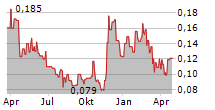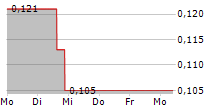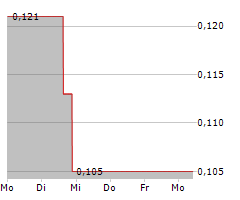
Vancouver, British Columbia--(Newsfile Corp. - April 22, 2025) - American Pacific Mining Corp. (CSE: USGD) (OTCQX: USGDF) (FSE: 1QC) ("American Pacific" or the "Company") is pleased to announce that drilling has commenced at its 100%-owned Madison Copper-Gold Project ("Madison" or the "Project") located in Silver Star, Montana. This marks the start of the Company's 3,000-metre drill program following the receipt of updated permit approval earlier this year.
The drill program is designed to test five priority target areas identified through extensive data integration and analysis. These targets include porphyry concepts and multiple skarn extensions both laterally and down plunge of known mineralization. The program will also focus on near-mine extension drilling at the Broadway mine area, where historic production totalled 144,000 ounces of gold from surface oxide mineralization, between 1880-1950.1 (see Image 1 and Figure 1). No drilling has been done in the area since mining operations concluded and sulfide mineralization, which was not considered economic during the historical mining period, has never been tested. The planned drilling also includes select regional shallow discovery targets. Collectively, the 2025 drilling is taking aim at high impact targets that have the potential to deliver significant value by demonstrating the scale of the system well beyond the areas historically mined.
Exploration Highlights:
- The drill campaign will leverage insights gained from the Silverstar Fault Complex, a key structural feature identified as a critical control on mineralization.
- Induced Polarization (IP) surveys2&3 have revealed compelling geophysical anomalies along the fault complex, guiding the targeting of skarn, porphyry, and orogenic mineralization in previously undrilled areas.
- Porphyry Potential: Drilling to date at Madison has primarily targeted high-grade copper-gold skarn mineralization within the upper 300 metres from surface. Limited drilling has penetrated deeper levels, leaving the porphyry potential largely untested. The Company has four drill holes planned to test two compelling porphyry targets: (1) a down-plunge target directly beneath the historical Madison Mine, where increasing mineralization and modeling suggest proximity to a source; and (2) a regional target to the southwest where coincident IP chargeability, zones of magnetic highs and lows, and potassium radiometric highs, collectively support the potential of a mineralized source. These deeper holes represent a significant upside opportunity to vector into a causative intrusive source.

Image 1: First hole, APMMAD25-01, with the historical Broadway Mill in the background.
To view an enhanced version of this graphic, please visit:
https://images.newsfilecorp.com/files/10322/249304_ce2a40f3d45b1a29_001full.jpg
Eric Saderholm, P.Geo., Managing Director of Exploration and Qualified Person for the Project, commented: "This drill program represents a comprehensive analysis of years of meticulous exploration and preparation. With these well-defined targets, we believe this campaign will provide meaningful insights into Madison's potential as a district-scale copper-gold system."

Figure 1: First drill holes underway testing historic Broadway Mine area.
To view an enhanced version of this graphic, please visit:
https://images.newsfilecorp.com/files/10322/249304_ce2a40f3d45b1a29_002full.jpg
The red outline within Figure 1 highlights the projection of the favourable contact zone between the Madison limestone and the quartz monzonite intrusive, which has returned high-grade copper-gold values in surface sampling. This critical contact is interpreted to be a contributing control on mineralization and remains largely untested along strike and at depth. While the figure projects historic Broadway mine workings, the drill holes shown are southern step-outs located up to 50 metres south of known workings. The Company interprets that historical mining may have ceased upon encountering sulfide mineralization at depth or due to a lack of processing technology at the time, which presents a compelling opportunity to test below and along unmined extensions of this contact zone.

Figure 2. Permitted holes for 2025 drilling at Madison Project
To view an enhanced version of this graphic, please visit:
https://images.newsfilecorp.com/files/10322/249304_ce2a40f3d45b1a29_003full.jpg
Madison Project Sampling and Analysis Quality Assurance and Quality Control Statement
American Pacific is committed to maintaining high standards of accuracy and reliability in sampling and analysis procedures. The following Quality Assurance and Quality Control (QAQC) measures are employed in the sampling and analysis processes.
Analytical Methods for the project include:
Paragon Labs
50AR-MS: Multi-element analysis (50 elements) using Aqua Regia digestion with ICP-MS for trace elements.
AuAg-GR30: Gold and silver analysis via 30g fire assay with gravimetric finish for high-precision results.
Au-FA30: Gold determination using fire assay with Aqua Regia digestion and spectroscopy for detailed concentration measurement.
OLAR-ASS: Over-limit Aqua Regia digestion ensures accurate results for high-concentration samples.
About the Madison Copper-Gold Project
The Madison Project was host to small-scale production that concluded in 2012, with 2.7 million pounds of copper produced at grades ranging from 20-35% copper. Subsequent drilling at Madison in 2017 included 30.18 metres of 24.50 g/t gold and 0.39% copper and 10.97 metres of 41.65 g/t gold and 0.38% copper (UG17-05 and UG17-06, respectively). Full disclosure can be found in the Company's NI 43-101 Technical Report for the Madison Project (americanpacificmining.com)
Qualified Person Statement
Technical aspects of this press release have been reviewed and approved by the designated Qualified Person under National Instrument 43-101, Eric Saderholm, P.Geo., Managing Director of Exploration for the Company.
About American Pacific Mining Corp.
American Pacific Mining Corp. is a precious and base metals explorer and developer focused on opportunities in the Western United States. The Company has two flagship assets: 100%-owned Palmer Project, a Volcanic Massive Sulphide-Sulphate (VMS) project in Alaska, and the 100%-owned Madison Project, a past-producing copper-gold project in Montana. For the Madison transaction, American Pacific was selected as a finalist in both 2021 and 2022 for 'Deal of the Year' at the S&P Global Platts Metals Awards, an annual program that recognizes exemplary accomplishments in 16 performance categories. Also, in American Pacific's asset portfolio are three high-grade, precious metals projects located in key mining districts of Nevada, USA: the Ziggurat Gold project, the Gooseberry Silver-Gold project; and the Tuscarora Gold-Silver project. The Company's mission is to grow by the drill bit and by acquisition.
References:
1. Mulholland, P. S., & Middleton, R. S. (2019). NI 43-101 Technical Report for the Madison Project, Madison County, Montana, USA (Effective date: March 4, 2019). Broadway Gold Mining Ltd.
2. Analysis of a Deep Induced Polarization (IP) Survey for Broadway Gold Mining, Madison Project, Montana USA; Robert S. Middelton P.Eng
3. Madison Gold - Copper Project near Whitehall, Montana Induced Polarization/Resistivity Results, July 18, 2008; Gradient Geophysics, Inc.
On behalf of the American Pacific Mining Corp Board of Directors:
Warwick Smith, CEO & Director
Corporate Office: Suite 910 - 510 Burrard Street
Vancouver, BC, V6C 3A8 Canada
Investor relations contact:
Kristina Pillon, High Tide Consulting Corp.
604.908.1695 / Kristina@americanpacific.ca
Media relations contact:
Adam Bello, Primoris Group Inc.
416.489.0092 / media@primorisgroup.com
Full disclosure can be found in our NI 43-101 Technical Report for the Madison Project at www.americanpacificmining.com.
The Canadian Securities Exchange has neither approved nor disapproved the contents of this news release.

To view the source version of this press release, please visit https://www.newsfilecorp.com/release/249304
SOURCE: American Pacific Mining Corp.




